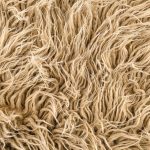When you're considering fabric choices for applique, it's essential to think beyond just color and pattern. Each type of fabric brings its own unique qualities to the project; for instance, cotton offers durability while silk provides an elegant sheen. Felt's non-fraying edges can simplify your work, but then there are more unconventional choices like denim or linen that add distinct character. Evaluating these materials can transform your designs, but you might wonder which fabric truly suits your vision best. Understanding the nuances could lead to unexpected results.
Table of Contents
Key Takeaways
- Cotton fabric is versatile, durable, and easy to handle, making it a popular choice for various applique projects.
- Felt material adds dimension without fraying, suitable for both beginners and experienced crafters.
- Silk offers elegance and a smooth texture but requires careful handling and special stitching techniques.
- Denim provides durability and flexibility, ideal for intricate designs, especially in bags and outerwear.
Cotton Fabric
When it comes to choosing fabric for applique, cotton is often your best bet due to its versatility and ease of use. It's available in a wide range of colors and patterns, making it simple to find the perfect match for your project. You'll appreciate its durability, as cotton withstands frequent handling and washing, ensuring your creations stand the test of time.
When working with cotton, you'll find it easy to cut and handle. It holds shapes well during the sewing process, allowing you to achieve crisp edges and clean lines. Whether you're a beginner or an experienced crafter, cotton's forgiving nature helps you avoid fraying and distortion, leading to polished results.
For best results, always pre-wash your cotton fabric to prevent shrinkage later on. If you're looking to add texture, consider layering different cotton prints together; this technique can create stunning visual effects.
Cotton also adheres well to fusible webbing, simplifying the applique process. Overall, if you aim for quality and versatility in your applique projects, cotton fabric should be your go-to choice. You won't regret it!
Felt Material
Felt material offers a unique texture and thickness that can enhance your applique projects with a cozy, dimensional look. It's incredibly versatile, making it a popular choice for both beginners and experienced crafters alike. When you choose felt, you'll notice its ability to hold shapes well, which is ideal for intricate designs.
One of the best things about felt is its wide range of colors and finishes. You can easily find sheets in vibrant hues or even more subdued tones, allowing you to match any theme or palette.
Plus, since felt doesn't fray, you won't have to worry about finishing edges, saving you time and effort. Felt is also lightweight, making it a fantastic option for layering in your applique projects. You can combine different colors and textures without adding bulk.
When you sew or glue felt, it adheres beautifully, ensuring your pieces stay in place.
Silk Options
Silk offers a luxurious sheen and smooth texture, making it a stunning choice for your applique projects. Its vibrant colors and delicate nature can elevate the elegance of your work, but you'll want to consider a few key factors before diving in.
| Silk Type | Characteristics |
|---|---|
| Habotai | Lightweight, soft, and easy to work with; great for layering. |
| Dupioni | Crisp texture with a rich luster; ideal for structured designs. |
| Silk Satin | Glossy front with a matte back; perfect for high-end projects. |
While silk can be more challenging to handle compared to other fabrics, it can produce breathtaking results. You'll need to use a good stabilizer to prevent fraying and consider hand-stitching for more intricate designs. Remember to choose a needle that can handle silk's delicate fibers, such as a microtex needle.
With the right techniques and care, silk can transform your applique into stunning pieces that showcase your creativity and skill. Embrace the challenge, and let the beauty of silk inspire your next project!
Denim Choices
When choosing denim for your applique projects, you've got a variety of fabric types to consider, each offering unique textures and weights.
It's also important to think about the stitching techniques that work best with denim, as they can affect both the durability and appearance of your designs.
Let's explore these options to help you make the best choices for your next project.
Types of Denim Fabrics
Choosing the right type of denim fabric can significantly enhance your applique projects, adding both texture and style. When considering denim, you've got a range of options to choose from, each with unique characteristics.
First, look at lightweight denim, often used for shirts and dresses. Its softness and drape make it ideal for delicate appliques.
Medium-weight denim strikes a balance, providing durability while maintaining flexibility—perfect for everyday wear items.
If you're aiming for structure, heavyweight denim is the way to go. It's sturdy and can support intricate designs without losing shape. This type is excellent for bags or outerwear.
Stretch denim, featuring a blend of spandex or elastane, offers flexibility, making it a great choice for fitted garments. The added stretch helps your applique move with the fabric, preventing any unwanted tension.
Stitching Techniques for Denim
Understanding the right stitching techniques for denim is key to ensuring your applique projects not only look great but also stand the test of time.
When working with denim, you'll want to choose a needle and thread that can handle its thickness. A heavy-duty needle, like a size 90/14 or 100/16, is ideal for piercing through multiple layers without breaking. Pair this with a strong polyester or cotton-wrapped thread that matches your fabric.
For your stitching technique, consider using a straight stitch for clean lines or a zigzag stitch if you want to add a bit of stretch. If you're working with raw edges, a zigzag stitch will help prevent fraying. You might also explore decorative stitches for added flair; just make sure they're suitable for the weight of your denim.
Don't forget to stabilize your fabric with interfacing or a tear-away stabilizer, especially if you're adding heavy appliques. This will prevent distortion during stitching.
Lastly, practice on a scrap piece before diving into your main project, ensuring you're comfortable with the technique. Happy stitching!
Linen Textures
When you choose linen textures for your applique projects, you'll enjoy unique benefits like breathability and durability.
You'll also want to explore various techniques for applying linen, as well as the wide range of colors and patterns available.
Let's discuss how these elements can elevate your creativity and ensure your projects stand out.
Benefits of Linen Textures
Linen textures add a natural elegance to applique projects, enhancing both visual appeal and tactile quality. When choosing linen, you'll notice its unique properties that make it an excellent option for your creations. Here are some benefits you shouldn't overlook:
- Durability: Linen is known for its strength, allowing your applique pieces to withstand wear and tear over time, making them perfect for functional items like bags or home decor.
- Breathability: The natural fibers in linen allow air to circulate, which can be especially beneficial for textiles used in clothing or bedding, providing comfort in various climates.
- Natural Aesthetic: The slight irregularities in linen's texture give your projects a handmade charm, elevating the overall appearance and making them stand out.
- Eco-Friendly: Linen is derived from the flax plant, which requires fewer chemicals and less water than many other fabrics, aligning with sustainable crafting practices.
Techniques for Applique Application
To achieve stunning results with linen textures in your applique projects, mastering a few key techniques can make all the difference.
First, you'll want to pre-wash your linen to prevent shrinkage later on. This ensures that your applique stays true to size after the final wash. When cutting your linen pieces, use sharp scissors for clean edges, which will help avoid fraying.
For application, consider using a lightweight fusible web. This adds stability while keeping the linen's natural texture intact. Iron the fusible web onto the back of your linen before cutting out your shapes, making the application process smoother.
When you're ready to attach your pieces, use a zigzag stitch or a straight stitch to secure them. This will give you a polished, professional look.
Don't forget to use an appropriate needle size and type for linen. A universal or microtex needle will work best, allowing you to sew through the fabric without damaging it.
Lastly, finish your edges with a serger or an overcast stitch to prevent fraying. These techniques will help you create beautiful, textured appliques that showcase the unique charm of linen.
Color and Pattern Choices
Choosing the right colors and patterns for your linen textures can elevate your applique projects and bring your creative vision to life. When working with linen, consider how colors and patterns interact to create a cohesive look. Here are some tips to guide you:
- Complementary Colors: Select colors that enhance each other. For instance, pairing soft pastels with deeper hues can create a striking contrast that draws the eye.
- Texture Balance: Mix textured linens with smoother fabrics. This adds depth and interest to your applique, making it visually appealing.
- Pattern Scale: Use a variety of pattern sizes. Large patterns can serve as focal points, while smaller patterns can fill in spaces and add subtlety.
- Seasonal Themes: Consider seasonal colors and patterns. Warm tones and floral designs work well for spring, while cooler colors and geometric patterns can evoke a wintery feel.
Specialty Fabrics
When working with specialty fabrics for applique, you'll discover unique textures and finishes that can elevate your projects.
These fabrics, such as silk, velvet, and organza, add depth and a luxurious feel to your designs. Silk, with its smooth surface and vibrant colors, brings an elegant touch, while velvet offers a rich, plush texture that stands out.
Organza, on the other hand, is lightweight and sheer, making it perfect for layering. You can use it to create delicate effects or to add dimension to your applique pieces. Additionally, consider specialty fabrics like denim or canvas for a more rugged look. These materials can bring a casual, fun vibe to your projects.
Don't forget about printed or embroidered specialty fabrics, which can introduce intricate patterns without extra effort. However, working with these fabrics may require a bit of extra care. Make sure to choose the right needle and thread to avoid damaging them.
Tips for Selecting Fabrics
Exploring specialty fabrics can inspire you, but knowing how to select the right materials for your applique projects is key to achieving the best results.
When choosing fabrics, consider the following tips to ensure your projects turn out beautifully.
- Fabric Weight: Opt for fabrics that match in weight. If you're using lightweight cotton, pair it with similar weights to avoid puckering during stitching.
- Texture: Think about the texture of your fabrics. Mixing textures can add dimension, but ensure they complement each other. A soft fabric paired with a rough one may not hold up well.
- Color Coordination: Choose colors that harmonize. Use a color wheel to find complementary shades or experiment with different tones to create visual interest.
- Washability: Consider how the fabrics will hold up after washing. Select materials that are pre-washed or won't shrink, ensuring your finished piece remains intact.
Frequently Asked Questions
What Tools Are Best for Cutting Various Fabric Types for Applique?
When cutting various fabric types for applique, you'll want to use sharp fabric scissors, rotary cutters, and precision craft knives. These tools help you achieve clean edges and accurate shapes for your projects. Happy crafting!
How Do I Prevent Fraying on My Fabric Edges?
To prevent fraying on your fabric edges, you can use a zigzag stitch, apply fabric glue, or iron on interfacing. These methods secure the edges, keeping your fabric looking neat and maintaining its integrity during your project.
Can I Mix Different Fabric Types in One Applique Project?
Yes, you can mix different fabric types in one applique project. Just make sure they have similar weights and textures to ensure they work well together. Experimenting can lead to unique and interesting results!
What Is the Best Way to Adhere Fabric to the Base?
To adhere fabric to your base, use fabric glue or fusible webbing. Iron the fabric for a secure bond. Make sure to follow the manufacturer's instructions for the best results, ensuring your project stays intact.
How Do I Wash and Care for Applique Items After Completion?
To wash and care for your applique items, hand wash them in cold water using mild detergent. Avoid bleach and harsh chemicals. Lay them flat to dry, ensuring the applique remains intact and vibrant.
- A Comprehensive Look at the Nonwoven Fabric Industry - July 11, 2025
- Nonwoven Fabrics: The Definitive Guide for Beginners - July 11, 2025
- Answering the Top Questions About Nonwoven Fabrics - July 11, 2025





